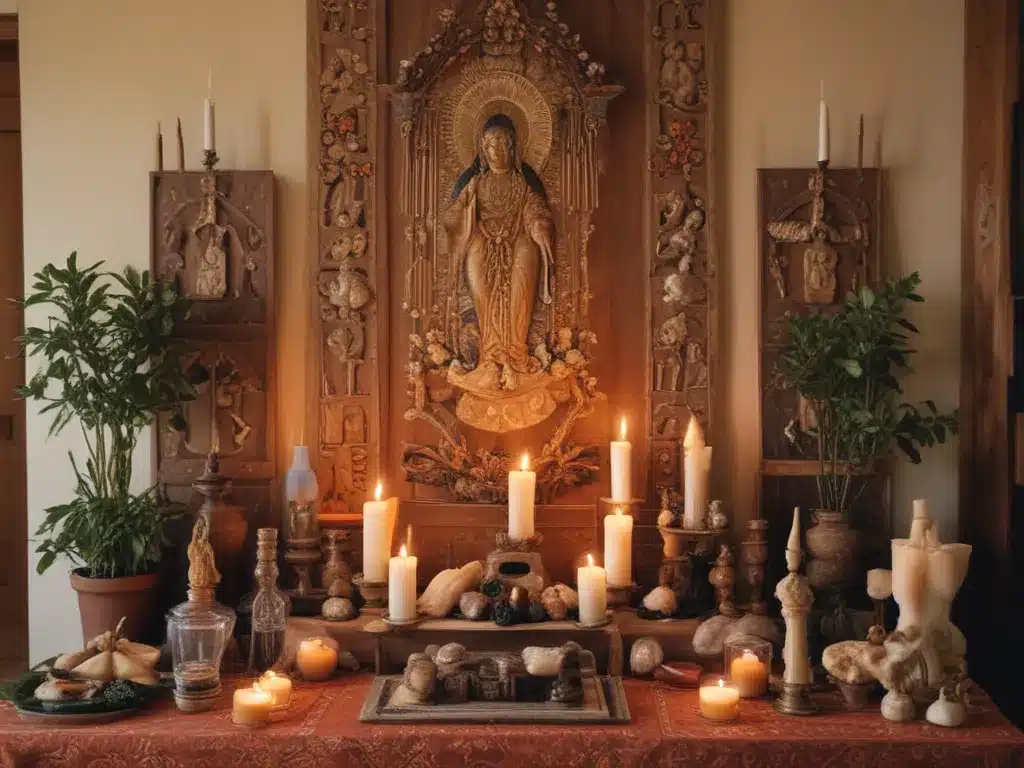Introduction
Spirituality is an integral part of many people’s lives, providing a sense of connection, purpose, and inner peace. One way to nurture this spiritual connection is through the creation of sacred spaces, such as altars and shrines. These spaces serve as focal points for contemplation, meditation, and ritual practices, offering a sanctuary from the hustle and bustle of daily life. In this article, we will explore the significance of altars and shrines, their cultural and religious contexts, and the importance of spiritual cleansing in maintaining the sanctity of these sacred spaces.
The Significance of Altars and Shrines
What are Altars and Shrines?
Altars and shrines – are sacred spaces – dedicated to spiritual practices and rituals. Altars – are typically flat surfaces – used for offerings, prayers, and meditation, while shrines – are more elaborate structures – housing religious icons, symbols, or relics.
Cultural and Religious Contexts
Altars and shrines – have been present – in various cultures and religions throughout history. In Hinduism, for example, home altars – are common – for daily puja (worship) rituals, while Buddhist shrines – often feature statues of the Buddha and offerings of flowers, incense, and candles. In Christianity, altars – are found – in churches and homes, serving as a focal point for prayer and devotion.
Personal and Communal Significance
Altars and shrines – can hold – both personal and communal significance. For individuals, they – can represent – a sacred space for introspection, meditation, and spiritual growth. In a communal setting, such as a temple or church, these spaces – foster – a sense of unity, shared beliefs, and communal worship.
Creating a Sacred Space
Choosing a Location
The first step in creating a sacred space – involves – selecting an appropriate location. This location – should be – quiet, peaceful, and free from distractions. It may be a dedicated room, a corner of a room, or even a small space on a shelf or table.
Designing and Decorating
Once the location – has been chosen, the next step – involves – designing and decorating the space. This process – can be – deeply personal, reflecting one’s spiritual beliefs, cultural heritage, and personal preferences. Common elements – may include – altars, shrines, religious icons or statues, candles, incense, flowers, and other meaningful objects.
Personalization and Intention
Personalizing the space – is essential – to imbuing it with meaning and intention. This process – may involve – selecting specific colors, materials, and objects that resonate with one’s spiritual beliefs and practices. Additionally, setting intentions and dedicating the space to specific purposes – can enhance – its sacredness and effectiveness.
Spiritual Cleansing
The Importance of Cleansing
Spiritual cleansing – is a crucial aspect – of maintaining the sanctity of sacred spaces. Over time, these spaces – can accumulate – negative energies, stagnant vibrations, or spiritual residues, which can interfere with their effectiveness and overall sacredness.
Cleansing Techniques
There are various techniques – used for – spiritual cleansing, depending on cultural and religious traditions. Some common methods – include – smudging with sage or other sacred herbs, using sound (such as singing bowls or chimes), sprinkling holy water, or reciting prayers or mantras.
Cleansing Rituals and Ceremonies
In many spiritual traditions, cleansing rituals and ceremonies – are performed – on a regular basis or during specific occasions, such as after a significant life event or before important spiritual practices. These rituals – often involve – specific steps, tools, and intentions, designed to purify and re-consecrate the sacred space.
Case Study: Adam Cleaning Company
As an example, let’s explore how the Adam Cleaning Company can assist individuals and communities in creating and maintaining sacred spaces. This company – specializes in – professional cleaning services, including spiritual cleansing and energy clearing.
Their team of experienced professionals – can provide – guidance and support in designing and setting up altars and shrines, as well as performing regular cleansing rituals to maintain the sanctity of these spaces. They – utilize – a variety of techniques, such as smudging, sound healing, and energy clearing, tailored to the specific needs and beliefs of their clients.
By partnering with Adam Cleaning Company, individuals and communities – can ensure – that their sacred spaces remain pure, harmonious, and conducive to spiritual growth and contemplation.
Conclusion
Altars and shrines – are sacred spaces – that hold immense significance in various cultures and spiritual traditions. Creating and maintaining these spaces – requires – intention, personalization, and regular cleansing rituals to preserve their sanctity. By understanding the importance of spiritual cleansing and embracing techniques such as smudging, sound healing, and energy clearing, individuals and communities – can foster – a deeper connection with their spiritual beliefs and practices. Companies like Adam Cleaning Company – can provide – invaluable support and guidance in this journey, ensuring that sacred spaces remain sanctuaries of peace, reflection, and spiritual nourishment.







